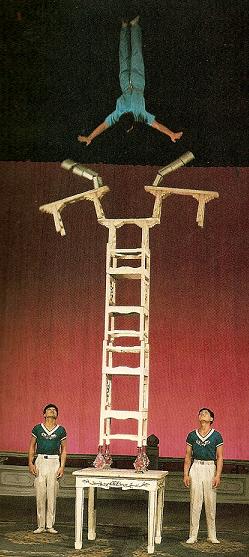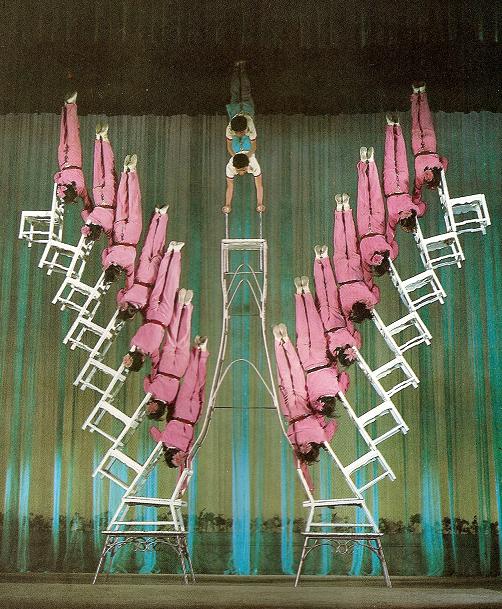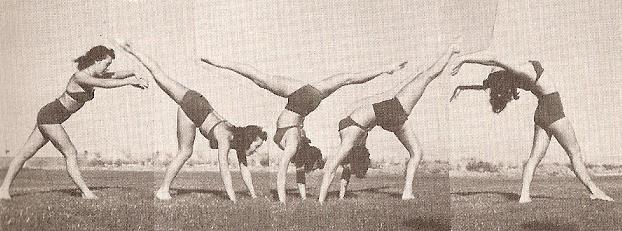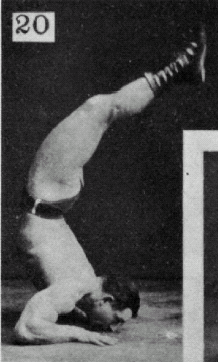My first thought when I saw this picture was ‘Uh-Oh.’
The reason I was thinking this, is because if I (or most people for that matter) was in his position I’d be in for quite a fall. But I think this acrobat has it under control.
This is from The Art of Chinese Acrobatics. Here’s the comments in the book about it.
‘Handstands on Movable Wooden Blocks puts the basic acrobatic skill of the handstand in a new perspective. An acrobat, balancing upside down, piles two parallel rows of wooden blocks on a bench while establishing various poses along the way. The performance in which the acrobat pushes away the piled blocks and drops himself onto the bench is particulary impressive.’
If you look at the first sentence you’ll notice it calls the handstand a basic acrobatic skill. That it is, though it might be painful to hear if you’re struglling with this ‘basic’ move. But the truth is the handstand is only the beginning, the foundation from which so much else is built.
It takes quite the skill to catch yourself in a handstand from a drop. You have to agree that this is an impressive feat especially at that height, where lack of balance means possible pain and injury.
Dropping into a handstand is a move you can practice in many other ways though, even if its just you jumping into one on the floor.
Good Luck and Good Hand Balancing,
Logan Christopher
P.S. To build that handstand foundation be sure to check out Hand Balancing Made Easy.











